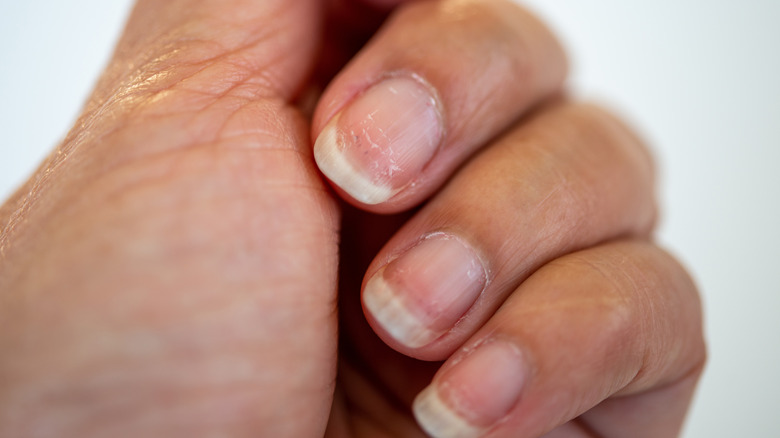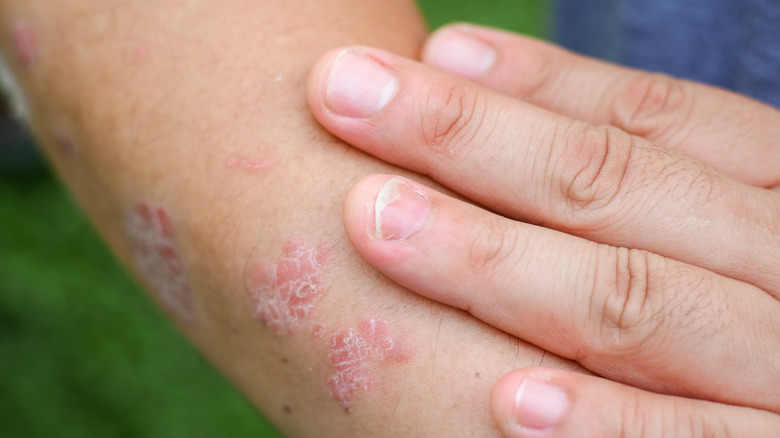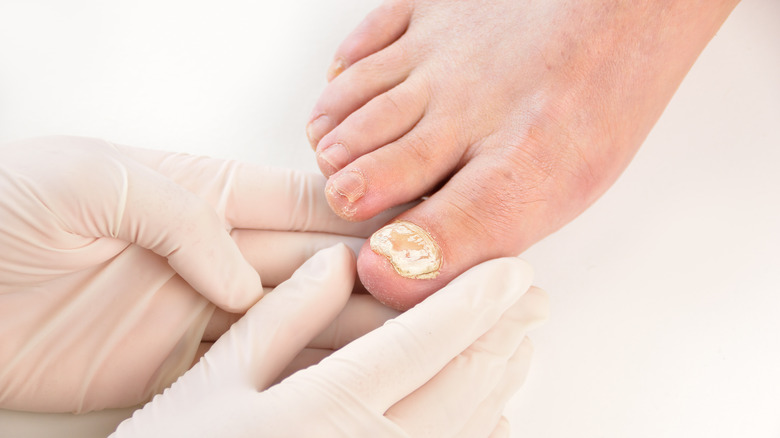
Nail pitting, a condition that causes small dents in the fingernails and toenails, is often ignored or overlooked. You may think that it’s just a cosmetic issue, but it could actually indicate an underlying disorder. As Dr. Tamara Lior told WebMD, “Just like the eyes are the windows to the soul, so are the nails.” These tissues can tell a lot about your health and lifestyle habits.
Any bumps, ridges, and other changes in the nails should be taken seriously, says Dr. Joshua Fox (per WebMD). These subtle signs may indicate a systemic disease, infection, or even heart problems. The same goes for nail pitting. The tiny dents in your fingernails or toenails can be due to psoriasis, dermatitis, Reiter’s Syndrome, or connective tissue disorders, according to Dr. Melissa Conrad Stöppler (via MedicineNet).
If you have any of these conditions, you may notice changes in multiple nails. Local trauma, such as slamming your finger in the door, only causes dents in a single nail. But what’s the most common reason behind nail pitting? Is it inflammation or something else? Let’s find out.
Nail pitting can be a sign of psoriasis

About 50% of people with psoriasis experience changes in the appearance of their nails, reports the Psoriasis and Psoriatic Arthritis Alliance. Nail problems are even more common among those living with psoriatic arthritis. Both forms of psoriasis are chronic and may cause flare-ups followed by periods of remission.
Psoriasis can affect one or more areas of your body, such as your elbows, knees, or hands. Its primary symptoms include patches of red skin covered with silvery scales, as well as itching, cracked skin, or swollen joints, explains the Mayo Clinic. Nail psoriasis, a less common form of the disease, causes pitting and discoloration of your fingernails and toenails. Over time, your nails may become looser and begin to crumble.
Nail psoriasis has three primary symptoms, points out the American Academy of Dermatology Association (AAD). These include nail pitting, separation, and white discoloration. You may also see a thin line of blood under your fingernails or toenails. Some of these symptoms may also indicate a nail infection, warns the AAD. That’s why it’s important to have your nails examined by a dermatologist as soon as you notice any changes.
Address the root cause of your problem

Psoriasis isn’t the only cause of nail pitting. Sometimes, this condition may occur because of vitiligo, alopecia areata, eczema, or reactive arthritis, according to WebMD. However, if you do have an underlying condition, you’ll likely experience other symptoms as well. Reactive arthritis, for example, also causes joint pain and inflammation. Conjunctivitis and lower back pain are common symptoms, too.
Another common cause of nail pitting is eczema, notes WebMD. Generally, this symptom tends to affect people who have eczema on their hands and feet. Lichen planus, a chronic inflammatory disease that affects the skin, nails, and other tissues, may cause pitting, too. Its symptoms may include purple flat bumps on the arms and genitals, hair loss, blisters, itching, and nail damage, reports the Mayo Clinic.
The only way to reduce nail pitting is to address the root cause of your problem. Psoriasis, for instance, requires a different treatment than eczema or reactive arthritis. Let your healthcare provider know about your symptoms so he can point you in the right direction. Meanwhile, skip manicures and cut your nails short to prevent further damage. Wear protective gloves when doing manual work or house chores and take biotin for stronger nails.
Source: Read Full Article





